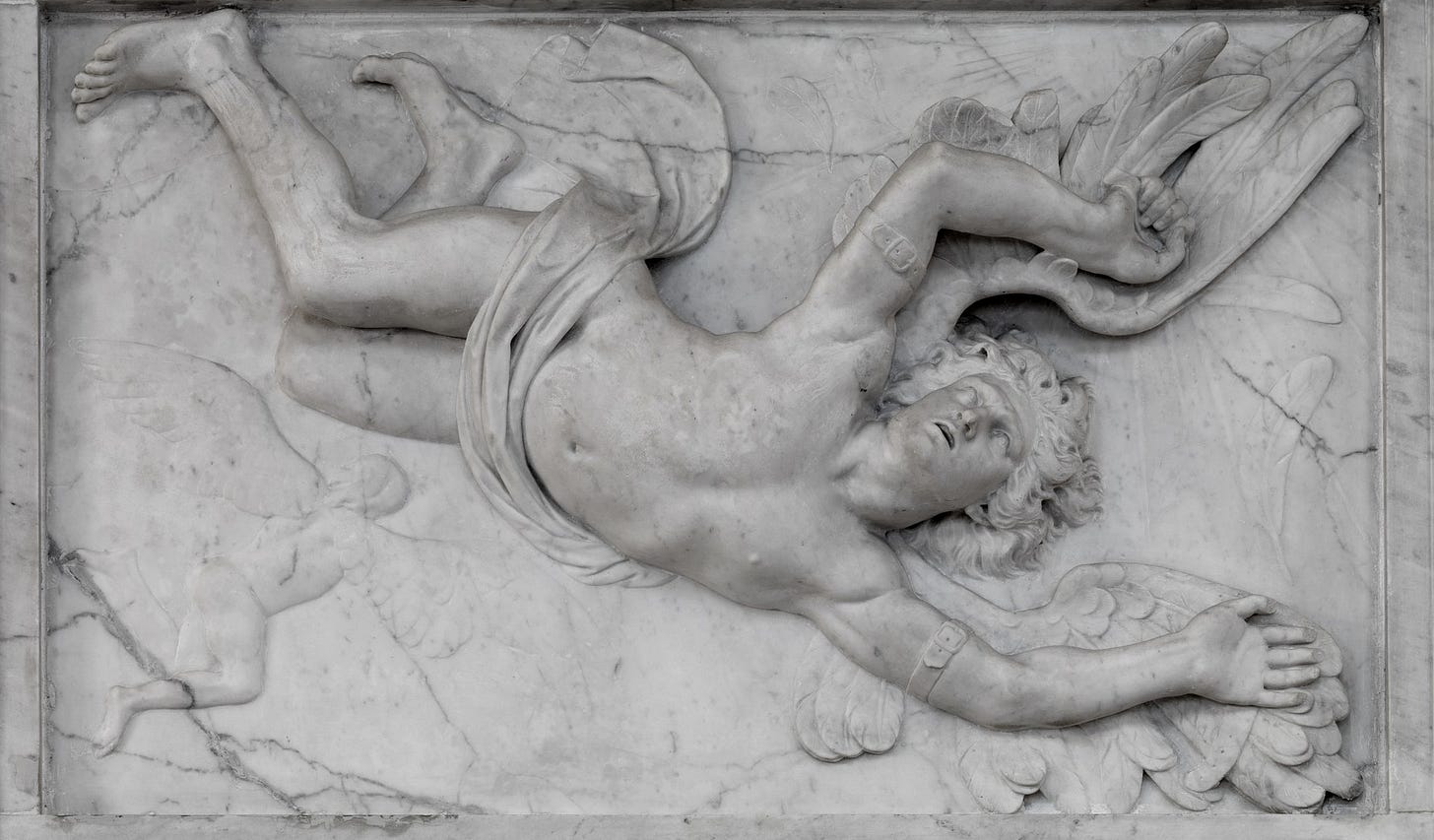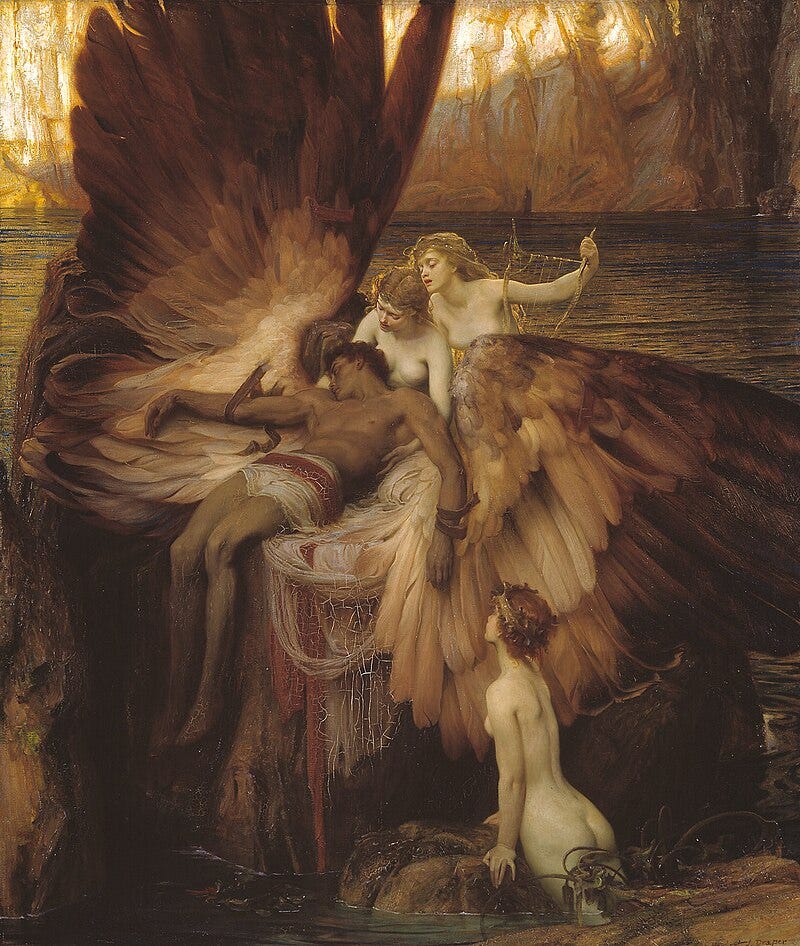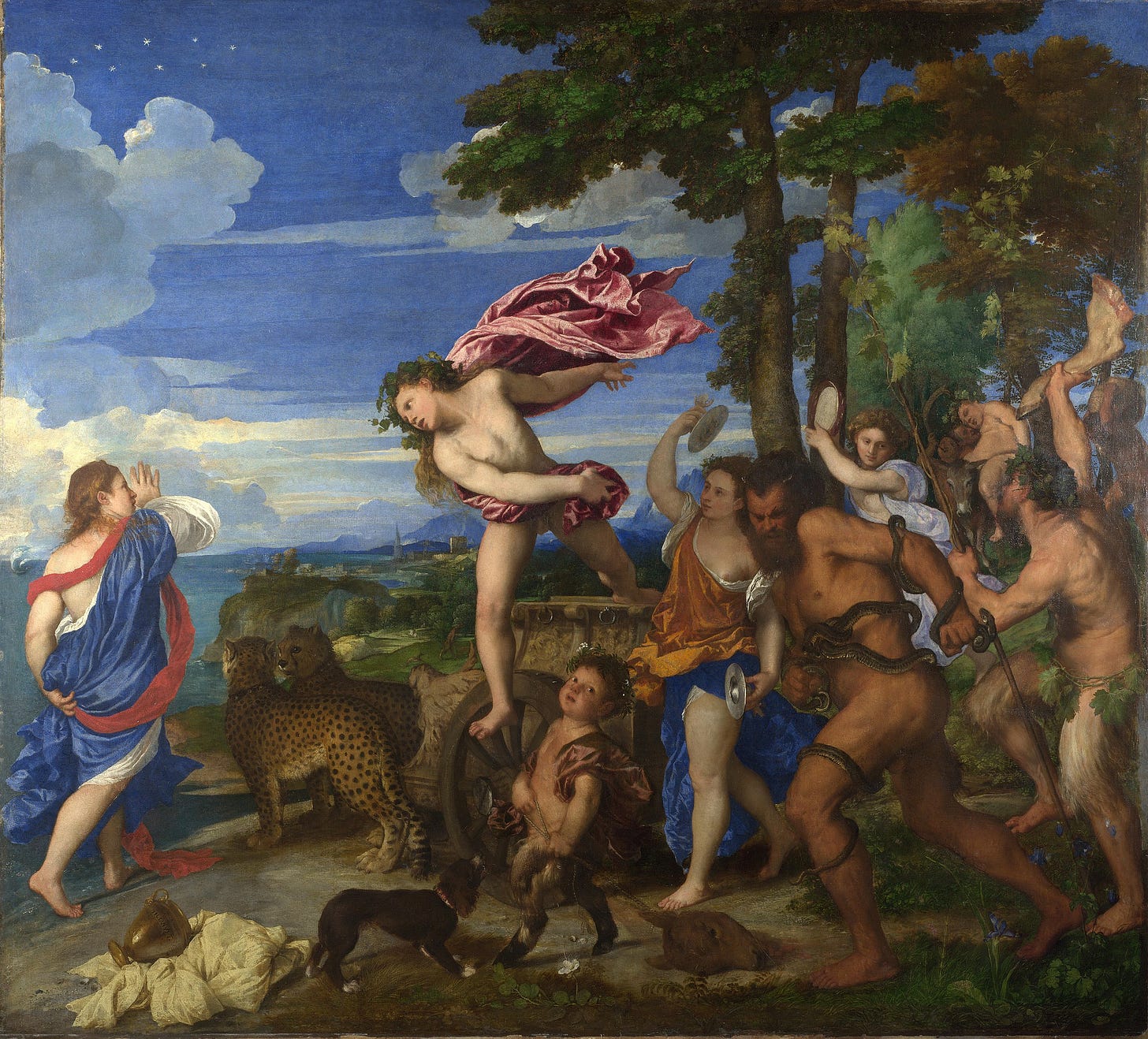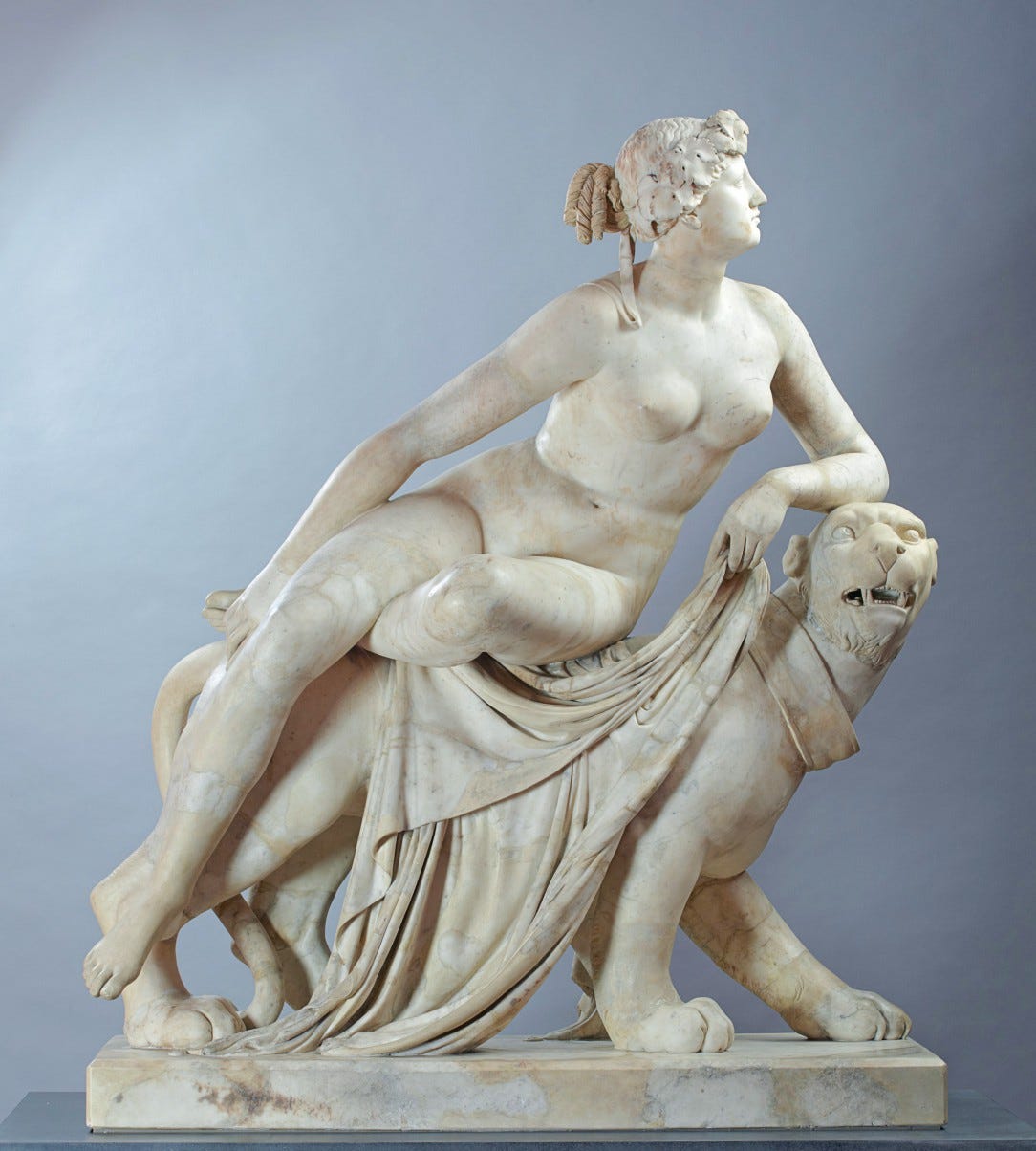Dear word explorer,
Samhain — or Halloween — hasn’t even arrived and the holiday is almost over in shops across Ireland. With no Thanksgiving buffer (or buffet!), commercial outlets are pivoting towards the season of selling. Skulls and cauldrons are crowded out by invading cheerful elves and snowmen. The Christmas market in Eyre Square in Galway city is under construction.
I hope you enjoy the era of ghouls and ghosts before the happier supernatural fables take over. (At least we’ll have Krampus…)
Up in the night sky, instead of seeing a headless comet flyby we’re having a comet funeral for Halloween! The sun has consumed comet C 2024 S1.
Ode to Stargrazer ‘Icarus’ C 2024 S1 Farewell feathered-tailed traveller. Fixed by a fatal orbit, you charged, sun-blind, joyful at destiny. Dissolve in bliss.
The above image is a sexy wake1 for Icarus, son of the Greek engineer Daedalus, who was the architect of the labyrinth on Crete which he constructed to contain the dreadful Minotaur. At its essence the story tells how Daedalus and his son Icarus were imprisoned by King Minos because they knew state secrets (how to navigate the maze). When the Athenian hero Theseus managed to find and slay the Minotaur, Minos assumed Daedalus was responsible and ordered the execution of the father and son.
Genius Daedalus had been planning his escape for some time, and had just finished crafting wings from the feathers of sea birds, leather sandal straps and wax. Father and son slipped on their wings, and Daedalus warned Icarus not to fly too close to the sun as his wings would melt and not to fly too close to the sea since the water and salt would clog the feathers and drag him down.
Solid Dad advice: avoid the extremes and keep to the middle way.
After years of captivity, Icarus swept through the skies ahead of his father, entranced with his freedom. Icarus climbed higher and higher to flirt with the sun but Helios was not impressed. The wax softened, Icarus’s wings disintegrated, and he plunged to this death.
Later, the story of Icarus was often recounted as a moralistic warning about over-reaching ambition. There is a marble frieze of Icarus falling to his death in the Royal Palace Amsterdam, in the room that used to be the Bankruptcy Chamber (Desolate Boedelkamer2).
A reminder to mortals of the potential downfall of risky fiscal flights of fancy.

As is typical with Greek stories, this tale is nested within a complicated drama that involved hidden parentage, subterfuge, murder, revenge, terrible curses and furious goddesses
For instance, it was Ariadne, the love-struck daughter of King Minos, who informed Theseus how to locate the Minotaur at the centre of the labyrinth by giving him a ball of thread and precise instructions. Typical of the versions we have inherited from ancient sources, smart women trust fated heroes despite the men’s terrible relationship history. Yet, there are hints here of an older myth, of the ‘mistress of the labyrinth’ who knows the pathways that bring one to the confrontation with the chimeric self — forcing the hero to reconcile with his primal force. Incidently, the Minotaur was Ariadne’s half-brother. It suggests she was familiar with the power of animal instinct.
She is the initiator, the instructor, who guides the way.
The stories recount that after escaping Crete, Theseus abandoned her on the island of Naxos, and sailed home with her sister, Phaedra, whom he married. Long-term, that decision brought Theseus and Phaedra heartbreak.
Ariadne, alone on Naxos, encountered Dionysus, god of wine and good times, and they married. At some point (during their wedding or after Ariadne’s death) Dionysus threw Ariadne's jewelled marriage crown into the sky, which became the Corona Borealis constellation, also known as the Northern Crown.
The near perfect semi-circle of stars is visible in the night sky, between the constellations of Hercules and Boötes. It is home to a recurring nova, which has bright outbursts every 80 years or so. Its last visible flare occurred in 1946, and astronomers predict it could soon sparkle anew.
This expressive painting by Titian3 shows the moment Ariadne and Dionysus meet — he flings himself toward her from his chariot drawn by two cheetahs, his shining cape streaming behind him like wings. Ariadne — erotically dishabille — was frantically waving at the departing boat and is now stunned by the new arrival.
What’s so gripping about the artwork is the depiction of the Thiasus — the ecstatic revellers who always accompany Dionysus. Not only is there a small satyr, there’s a muscled man wrestling with a snake, the maenads (female devotees) playing instruments, and a large, inebriated man carried along by a donkey. It’s a bawdy group, representing wanton abandon. They grapple openly with their desires.
The god of intoxication leaps whole-heartedly for Ariadne, instantly offering her a starry crown (in the sky above her head).
Ariadne, sister to the Minotaur, who left family and home for an unreliable but pretty lover, is a surprisingly good match for this zealous god.
They are comfortable with beasts.
When looking for art to decorate elements of my newsletter, especially the mythic moments, I regularly encounter the problem of the scantily-clad lady. Powerful goddesses and women of note are constantly depicted in the gauziest of dresses and often with their breasts on display. Even when engaged in warfare, there’s a high possibility of a nip-slip. The grand women of the past were so imbued with energy that no brassiere could contain their form! To be fair, in this example, the three Oceanids, with pert bottoms and boobs, are creatures of deep water, and might not be bothered by cold temperatures. Yet, the unpleasant consequences of nude diving among sharp coral or stinging jellyfish makes their lack of any apparel rather alarming.
That name is supremely solemn.
An artist who painted many scenes from myths, including many poorly-draped women.








Wonderful piece, Maura! Timely, too - not just with the Halloween/comet link, but also because I've just been studying the role of Delphi in Greek storytelling, in relation to expressions of culture. Lots of sculptural nudity, but this was often a signal of social status. You've now got me fascinated to dive into the role of nudity in paint, through different time periods and different cultures... Thanks for the inspiration!
Correct me if I'm wrong, but isn't the nudity taboo time and culture dependent?
As already mentioned in the comments below, in the BC era everybody was depicted naked. Maybe during and after the Renaissance naked women's breasts weren't considered an offensive sight, and only the genitals (both male and female) were covered with some piece of cloth (or kept out of view by crossing the legs)?
I think the obsession with boobs is a relatively modern obsession. Anyway, great piece!